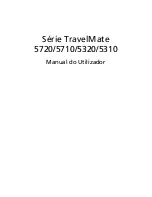
82
Electrostatic Discharge (ESD) and ESD Protection
WARNING
Electrostatic Discharge (ESD) can damage disk drives, cards, memory modules and
other parts. We recommend that you carry out all procedures in this guide only at an
ESD-workstation. If one is not available, provide some ESD protection by wearing an
antistatic wrist strap attached to any unpainted metal surface when handling parts.
If you do not have one, discharge static electricity from yourself and your clothing
by touching a nearby metal surface before handling any internal components.
Product Storage Environment Guidelines
1.
When the product is in use (or started up):
•
This product is best used in temperatures from 15ºC to 25ºC, although it will operate
normally from 5ºC to 35ºC.
•
Avoid placing the product in a dusty environment as excessive dust might be sucked
into the machine body, reducing its cooling efficiency.
•
Do not try to block any ventilation holes as you may cause the product to over-heat.
•
Do not place the product in a humid environment to avoid rusting or corrosion due to
excessive water vapourisation.
2.
When the product is shut down:
•
Avoid placing the product for a prolonged time in hot environments (with an excessive
temperature of above 60ºC) as that can damage the LCD panel or cause the battery
pack to explode or leak.
•
If you plan to keep the product unused for a long period, do charge the battery to full
capacity and then disconnect the battery pack before putting the notebook in storage.
•
Avoid placing the product in extreme cold conditions (below 0ºC).
Recommended Environment
Operation
•
Temperature: 5°C to 35°C
•
Relative Humidity: 10% to 80% (Non-condensing)
•
Gradient: 10°C/hr







































